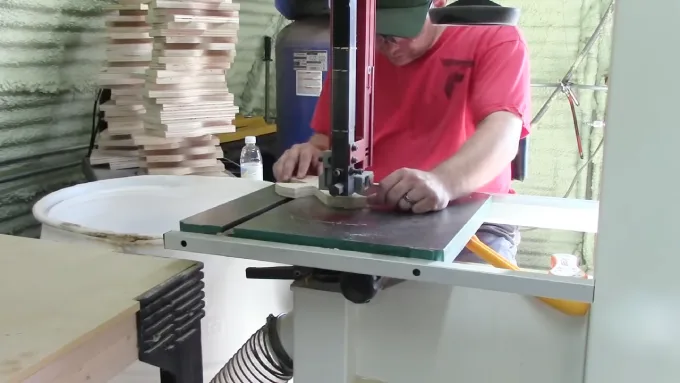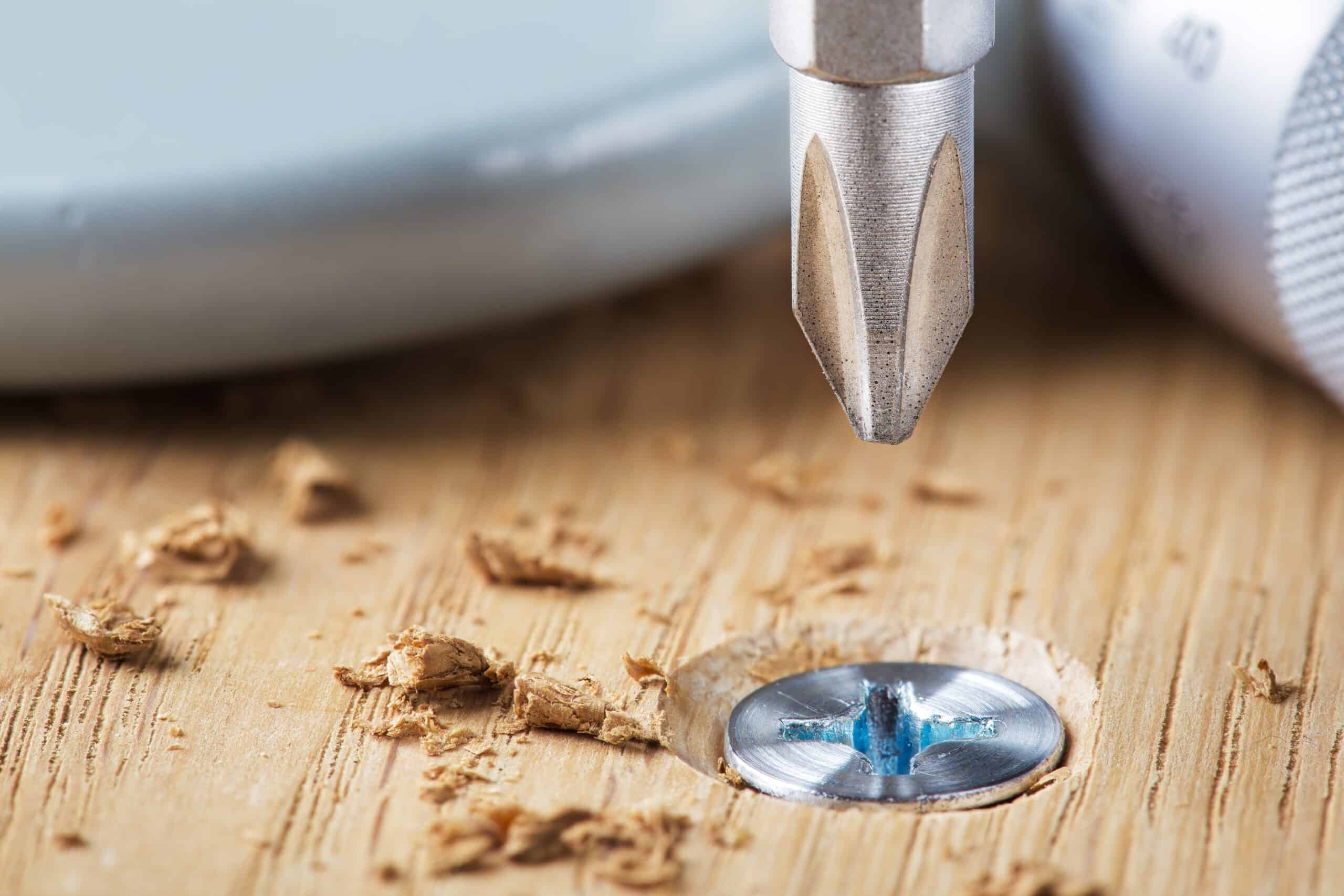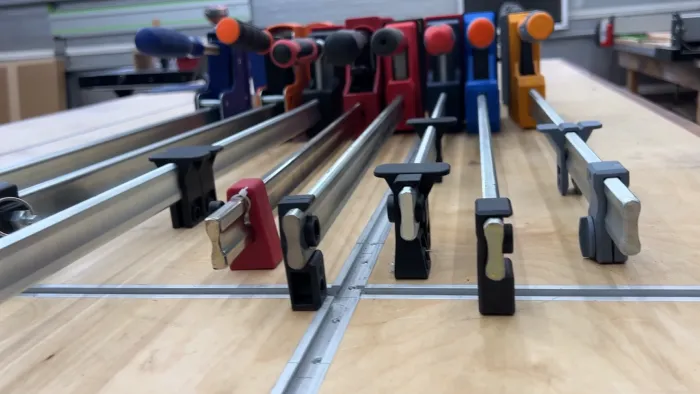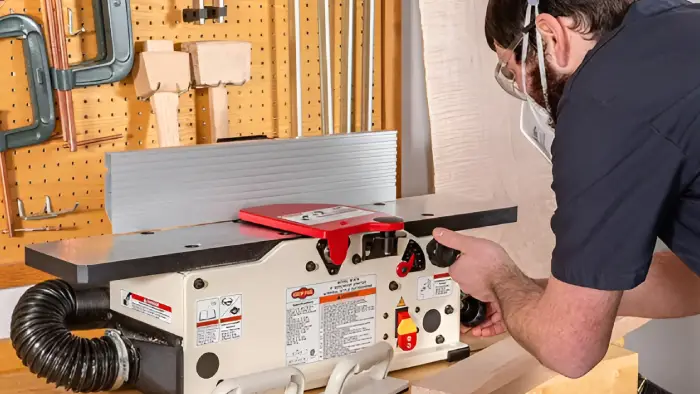WoodenuKnow.com is a participant in the Amazon Services LLC Associates Program, an affiliate advertising program designed to provide a means for sites to earn advertising fees by advertising and linking to Amazon.com and may earn from qualifying purchases.
For any woodworker, the dreaded “bandsaw blade suddenly coming off” issue strikes fear into their hearts. Not only does it mean a delay in production and irate customers, but worse still, potential danger. So what leads to this oft-petrifying phenomenon?
There’s a wide range of potential culprits, from lack of proper tensioning and alignment to dull or worn-out blades and even debris buildup on the device. By understanding what can cause this issue, you increase your chances of preventing future slip-ups.
Let’s explore the potential causes and brainstorm solutions so you can get back to sawing with ease.
Why Does My Bandsaw Blade Keep Coming Off: Identifying The Reasons
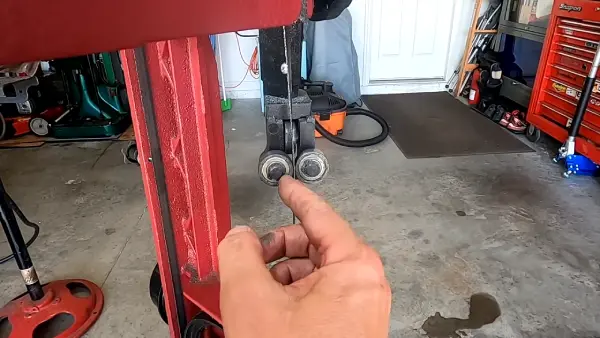
If you’re cutting with a bandsaw and suddenly hear the blade coming off its wheels, don’t panic. Identifying what’s going wrong is key to getting back on track quickly and safely. So take some time out to find the root cause of this problem before attempting repairs.
The following are some common reasons a bandsaw blade comes off:
Improper Tensioning
Incorrectly tensioning a bandsaw blade can cause it to slip off the wheels during a cut or break due to excessive stress. For carbon steel-toothed blades, the optimal tension usually falls between 15,000 and 25,000 PSI, depending on several factors like the material and thickness.
For slitting blades, the tension should be set at 12,000 to 20,000 PSI, while bandsaw blades generally aren’t tensioned over 35,000 psi. It’s also necessary to check tension regularly, as blades may stretch or become loose with repeated use.
Poor Wheel Alignment
Misaligned wheels can cause the saw blade to come off during a cut as well as negatively affect cutting accuracy and performance of the saw overall. The upper and lower wheels must be parallel and at an even distance apart, so the blade path tracks correctly.
Aside from that, it’s recommended that you check that both wheels are aligned exactly perpendicular to one another by using a square tool before you begin your cuts so that they don’t shift while in use. By doing so, you’ll get the best performance from your bandsaw and minimize slipping.
Debris Buildup Around Wheels
Debris, like dust, chips and metal filings, can accumulate around the wheels of your band saw and cause them to malfunction. This misalignment means that one side of the blade is getting more wear than the other.
Eventually, this just causes the blades to come off after some extended usage of cutting through tough materials like metal or hardwood. Meaning that you will have to shell out cash for new ones.
Worn Out Rubber Tires/Bearings/Wheels
Rubber tires and bearings on your band saw can wear out over time, so you’d need to replace them if you want to avoid issues like slipping or coming off. It’s also essential not just to replace worn-out parts but also occasionally inspect all components of your machine, including bearings, pulleys, belts, tracks etc.
To detect any signs of wear before they cause any issues while you are working. Also, make sure you are using high-quality replacement parts whenever possible, as this will ensure long-lasting performance and fewer maintenance costs over time.
Having a Dull Saw Blade
Having a dull saw blade makes it much more difficult for it to grip properly onto whatever material you are trying to cut through. Therefore increasing its risk of drifting away from where it’s supposed to stay (which can result in falling off).
You should, therefore, ensure that you regularly sharpen your saw blade to ensure smooth cutting operations without experiencing slipping issues.
Wrong Cutting Measurement
Yet importantly, one must always consider correct cutting measurements when dealing with these types of tools. Failure to do so could result in blades becoming misaligned far away from their intended mark, shooting out sparks.
Potentially damaging materials nearby (such as wood) plus wearing down cutting edges quicker.
Note: Just as in many other aspects of life, it is important to take proper precautions beforehand and measure twice, cut once.
Keep Your Bandsaw Blade Intact: Simple Tips for Success
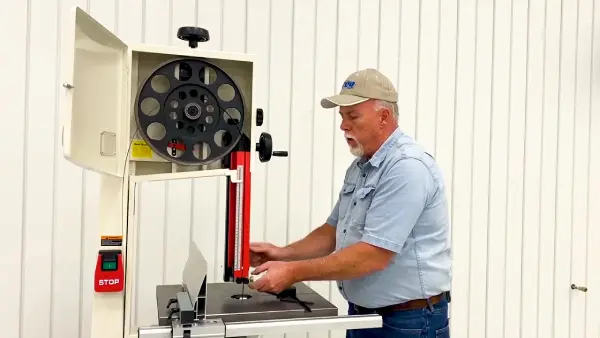
A common problem with bandsaw blades is that they can come off in the middle of a project. To help ensure your saw blade stays put, here are some handy tips to prevent slips:
- Make Sure Your Blades Fit Properly: To prevent bandsaw blades from slipping, ensure they fit properly within the saw’s slots. A blade guide can help you ensure the blade is at the right tension for optimum performance and stability.
- Keep Your Blades Sharp: Dull blades slip more than sharp ones because they don’t hold as tightly to the slots as sharp ones. Keep your blades sharp with a file or stone, so they stay in place when cutting tough stuff.
- Secure The Blade With A Wrench: Using a wrench or other gripping device while tightening down its screws and clamps will help keep your bandsaw blade from slipping out. The tighter and more secure everything is, the longer it will last.
- Low Blade Tension When Not In Use: Keeping tension low between uses will help prevent wear and tear on both the blade and the saw itself. Too tight tension can damage one or both components, causing eventual damage or even breakage.
- Use A Lubricant On The Slots: Lubricating both sides of your bandsaw slots will improve friction between them and the blade. It prevents slippage caused by vibration or wear and tear caused by extended use without maintenance.
- Always Change Blades In Safe Conditions: Never change old worn-out blades while standing on ladders or working near anything that might cause harm. Place the blades on firm ground, so there’s no chance of injury if anything slips.
Does The Wheel Diameter Have to Match the Blade Thickness To Prevent Slipping?
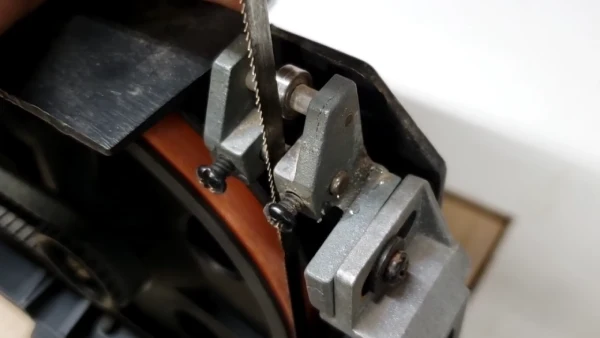
When using a bandsaw, the thickness of the blade must be properly matched with the diameter of the wheel. If these two measurements don’t add up, not only can you kiss perfect cuts and accuracy goodbye, but you’re also at a greater risk of the blade cracking or coming off due to excessive strain.
On top of that, incorrect sizing can generate excessive vibration and pose safety risks. So if you want to avoid having any nasty surprises when operating a bandsaw, make sure to check sizes before taking any action.
Does Speed Matter to Keep the Blade From Slipping On the Bandsaw?
Speed does matter to keep the blade stable on the bandsaw and prevent it from coming off. The speed of the bandsaw determines how quickly and effectively it can cut through materials. Slower speeds can cause buckling and binding of the blade, resulting in kickback, cutting inaccuracies, and even damage to the saw.
To prevent these issues from occurring, it is important to use an appropriate speed for the material being cut. Different types of materials require different speeds. Softer woods, such as pine, require lower speeds, while harder woods, like oak, require higher speeds.
As a result, there should be enough tension on the blade to stay in place while cutting. Users can keep their blades stable during their entire project by adjusting both speed and tension appropriately for each material.
Can a Bandsaw Blade Guard Prevent a Blade From Falling Off?
A bandsaw safety guard is designed to protect operators from injury due to sudden contact with a spinning saw blade. It does this by preventing pieces of material from being grabbed by the saw, which could potentially propel them towards an operator at high speeds.
The guard also works as an additional layer of protection in keeping fingers away from the fast-moving blades and helps ensure they stay securely attached while in use. Despite this, safety guards might not always be enough to prevent blades from becoming detached during operation.
There are still potential risks associated with using these tools, such as over tightening or incorrect blade installation. Therefore, it is best practice to inspect all components prior to use and have safety measures in place when operating power equipment like bandsaws.
What Can You Do to Stop Bandsaw From Wandering?
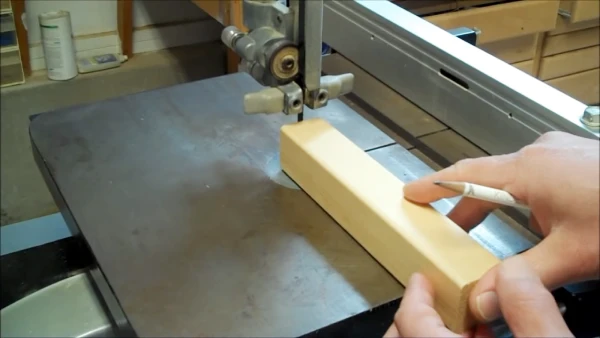
When using a bandsaw, it can be easy for the blade to wander and cause inaccurate cuts. To prevent this, you can make a simple guide that applies pressure directly to the spot where the blade will cut. This guide should be made with a scrap piece of wood that matches the thickness of the cut you are making.
Having even and consistent pressure on that spot will help keep the blade steady during the cut and avoid any wandering off track. Similarly, if possible, try to adjust any blade tension settings or other variables that could affect accuracy to get optimal results.
Is There a Way to Stop a Bandsaw Blade From Drifting?
Keeping band saw blade drift under control can be a challenge, but having an adjustable fence is the best way to make sure your cuts stay straight. If you don’t have one, don’t worry.
You can construct something makeshift by clamping two pieces of wood together at an angle matching the drift angle for your particular blade. This may take some trial and error to find the right angle with minimal sawdust buildup on either side of your cut line.
But once you do, clamp it securely in place and you should be good. Having a fence clamped at the right angle will keep your blade from drifting off-course and wasting time or material while making cuts.
Keep Your Bandsaw Blade Secure With Regular Maintenance
Get the most out of your bandsaw with proper maintenance. Keep an eye on rubber tires, wheel bearings and blade tension. All are integral to peak performance. With a little attention, they’ll stay in perfect condition and be ready for any woodworking job without the risk of blade detachment.
Don’t just settle for routine inspections of your bandsaw blades. Go the extra mile and sharpen them regularly to guarantee smooth performance on all projects. Keep these tips close, and you’ll unlock the potential of every masterpiece you create.

